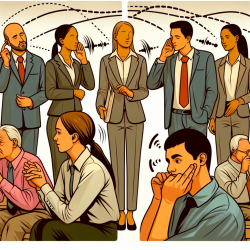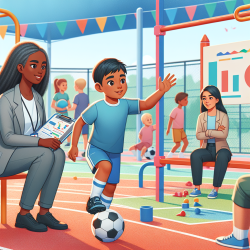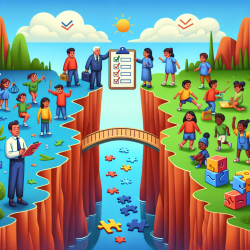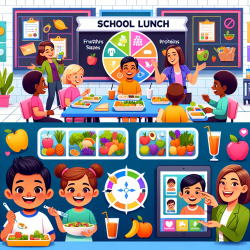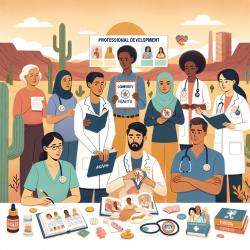Introduction
As speech-language pathologists, our commitment to creating inclusive and supportive environments for children is paramount. The recent research article, "Co-creating inclusive spaces and places: Towards an intergenerational and age-friendly living ecosystem," provides valuable insights into developing spaces that are beneficial for all ages. This blog explores how practitioners can implement these findings to enhance their practice and outcomes for children.
Understanding Intergenerational and Age-Friendly Ecosystems
The study emphasizes the importance of integrating people of all ages into community spaces, highlighting the need for intergenerational, age-friendly living ecosystems (AFLEs). These ecosystems aim to enhance public health planning by fostering environments where individuals, regardless of age, can thrive. The research involved participatory methods, engaging a diverse group of participants across eight countries, using virtual co-creation sessions and surveys to gather data.
Key Findings and Their Application in Practice
Sensory Factors
The study identifies sensory factors as crucial in designing inclusive spaces. For speech-language pathologists, this means creating environments that consider the sensory needs of children, such as controlling noise levels for those with auditory sensitivities or ensuring appropriate lighting for visual clarity. Incorporating sensory-friendly elements can significantly enhance a child's ability to engage and learn.
Physical and Digital Factors
The research highlights the importance of both physical and digital spaces in AFLEs. Practitioners should consider the physical layout of therapy spaces, ensuring they are accessible and adaptable for various activities. Additionally, leveraging digital tools can enhance therapy delivery, especially in remote or hybrid settings, making services more accessible to children and families.
Socio-Cultural Factors
Addressing socio-cultural factors involves tackling ageism and promoting inclusivity. For speech-language pathologists, this means fostering an environment where children feel valued and included, regardless of their background. Encouraging interactions between different age groups can also provide children with diverse perspectives and learning opportunities.
Encouraging Further Research and Implementation
The study provides a roadmap for creating AFLEs, emphasizing the importance of collaboration across disciplines and sectors. Speech-language pathologists are encouraged to engage in further research and collaborate with other professionals to develop inclusive, intergenerational spaces. By doing so, they can contribute to a more inclusive society that benefits all ages.
Conclusion
Implementing the findings from the research on intergenerational and age-friendly ecosystems can significantly enhance the practice of speech-language pathology. By focusing on sensory, physical, digital, and socio-cultural factors, practitioners can create environments that support the development and well-being of children. For those interested in exploring this topic further, the original research paper can be accessed through this link: Co-creating inclusive spaces and places: Towards an intergenerational and age-friendly living ecosystem.




